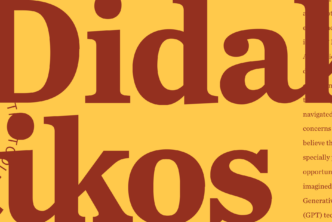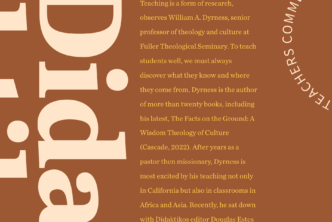I put some questions recently to John Meade and Peter Gurry regarding their newly launched Text and Canon Institute, based at Phoenix Seminary. In this interview, they discuss the impetus behind the Institute, the significance of textual criticism for the church, and what we can expect from these two enterprising scholars in the future.

What is the mission of the TCI, and how did it come about?
JM: The mission of the Text & Canon Institute is to encourage research and publication of scholarly work on the history of the canon and the text of the Bible. We hope to fulfill this mission by fostering top-tier academic research on questions pertaining to the Bible’s history and by making that research available to pastors and church-goers in the forms of general conferences, pastoral seminars, and the like.
PG: The TCI came about by seeing a unique need that we could fulfill here in Phoenix. As far as we know, there is no academic institute or research center that covers both the text and canon of both the Old and New Testament. Also, because our school now has two young scholars dedicating their academic work to these areas, it seemed strategic both for Phoenix Seminary and for the church to start something that could leverage this combination.
Related to that, what is the significance of the fact that the TCI was founded within the context of a theological seminary, instead of a secular university’s religion department, for example?
JM: Several universities can and do fulfill the first part of the mission by hosting research colloquia, and we intend to involve those who work at such institutions by inviting the best scholars in the world to participate in academic colloquia at Phoenix Seminary. But universities rarely, if ever, consider service to the church as part of their mission. As a seminary, we absolutely do.
PG: To add to what John has already said, we believe the Bible is the church’s book first and foremost and so the church ought to be at the forefront of understanding the formation and history of her charter document. For that reason, it seems fitting to us that the TCI should be housed by a confessionally Christian institution committed to serving the Church.
Why is it important for Christians to understand the Bible’s history through studies of the text and canon of Scripture?
JM: From a historical standpoint, early Christian catechesis included instruction on the canon of Scripture. Christians, thus, instructed young converts on what books comprised their scriptures. Given the digital information highway, Christians of all levels of maturity are confronted with so many different forms of information on the history of the Bible and usually they do not know how to discern between chaff (like this recent gem) and wheat, and therefore, much confusion on the question of the Bible’s history persists. Often pastors, who handle many and varied tasks on a day-to-day basis, have not had time to follow the discussion on the Bible’s history since they left seminary. We think the TCI will be positioned to give pastors and laypeople resources to help them think through the question afresh.
PG: For non-experts, the transmission of the Bible is often simplified (this is not bad in itself) but this too often leads to inaccuracies (this is bad). This happens both with non-Christians and Christians alike. So, for example, when Dilbert creator Scott Adams read Bart Ehrman’s Misquoting Jesus, his takeaway was that “I never knew that there are about a zillion different versions of the Bible because (and I am summarizing Ehrman’s entire book here) it was copied and recopied by hand, by semi-literate, opinionated morons for hundreds of years.” On the other hand, when a pastor and author overstates the textual evidence for the New Testament and concludes that “we only about 16 variants per manuscript” and says “that’s really not many,” that’s also problematic. Christians who love and trust the Bible want good, reliable information on how we got this book we love. We hope the TCI can help provide that.
[callout img=”https://files.logoscdn.com/v1/files/23617228/content.jpg?signature=m00V1GBHE4Ixh650XK_OMS2nFZE” text=”Get the latest contribution to NT textual criticism by Peter Gurry” link_url=”https://www.logos.com/product/175039/myths-and-mistakes-in-new-testament-textual-criticism?utm_source=academic.logos.com&utm_medium=blog&utm_content=2019-04-04-tci-phoenix-meade-gurry&utm_campaign=promo-logospro2019″ link_text=”Myths and Mistakes in New Testament Textual Criticism”]What is it about Phoenix Seminary that lends itself to the founding location of the TCI in terms of resources and people?
PG: As we mentioned, at Phoenix Seminary we are researching and publishing across both testaments when it comes to text and canon. We certainly know of places that do Old Testament text, New Testament text or canon, but we don’t know any that cover it all in such depth. In addition to that, our new ThM program is especially poised to help those who want to be well prepared for doctoral work in these fields.
What role do each of you play in the TCI, and what in your background has prepared you both individually for this project?
JM: Peter and I lead the TCI as co-directors. This involves planning events, conceiving of and executing new initiatives, strategic development, marketing—the whole nine yards. My Greek professor in college once said of the manuscript differences, “As Christians, we do not need to fear the evidence.” I guess you could say that was my first introduction into Christian scholarship as “faith seeking understanding.” That vision for scholarship only increased as I worked with Peter Gentry in my graduate work. Since then, my work in OT textual criticism and history of the biblical canon has prepared me for this post.
PG: I’ve been fascinated by textual criticism since my college days. It was then that I learned about those mysterious symbols at the bottom of my Greek New Testament. It was later, as a seminary student, that I had the opportunity to work for Dan Wallace’s Center for the Study of New Testament Manuscripts (CSNTM). My first experience seeing a New Testament manuscript in person was all it took. I was hooked. I knew I wanted to study the transmission of the Bible. After that I wrote my PhD dissertation on NT textual criticism and I’ve been researching and publishing in that area since then. As for my role here, it’s mainly to make sure that John Meade doesn’t forget about the new and better covenant. (I tease.)
[callout img=”https://files.logoscdn.com/v1/files/23943034/content.png?signature=FS8u3rloMQ7oO3UtrDgfnzUzmL8″ text=”Peter Gurry’s recent book is an essential introduction for any student of TC” link_url=”https://www.logos.com/product/175128/a-new-approach-to-textual-criticism-an-introduction-to-the-coherence-based-genealogical-method?utm_source=academic.logos.com&utm_medium=blog&utm_content=2019-04-04-tci-phoenix-meade-gurry&utm_campaign=promo-logospro2019″ link_text=”A New Approach to Textual Criticism: An Introduction to the Coherence-Based Genealogical Method”]Tell us a bit about the composition of your advisory board and how you anticipate them best facilitating the work of the Institute.
JM: At this stage, our advisory board consists primarily of our own mentors and close friends working in these same areas. I guess you could say we phoned in a favor and they answered, for which we are grateful to them. As an advisory board, they are available to offer their counsel for the overall direction and decisions of the TCI.
PG: As the TCI grows, we may need to expand our advisory board and add other leadership positions. But it seemed wise to start small and nimble and grow as opportunity presents itself.
What projects and events do you have planned for the near future?
JM: Our first conferences are planned for 2020 and we hope to announce details of those before too long. What we can announce publicly today is that we are launching a brand new Text & Canon Institute Fellowship for the 2019–2020 academic year. These TCI Fellows will be full-time ThM students at Phoenix Seminary with aspirations to use their learning in the area of text and canon in their doctoral work. TCI fellows will receive a full, one-year scholarship in return for assisting the directors (me and Gurry) with administrative tasks and research projects. We would encourage all who are interested to apply here.

Do you plan to bring more people on board in research roles in the near future, whether as postdocs, fellows, or otherwise?
PG: That’s a good question. At the moment, we are focusing on our TCI Fellows (ThM students), church-related conferences, and academic colloquia. Down the road we would love to expand the number of TCI Fellows in our ThM and possibly provide space for visiting scholars. But that will depend both on available funding and the interest.
What would you like to see accomplished through the TCI in 10–15 years, both in an academic and church context (or perhaps the integration of the two)?
PG: I think we would be very happy if the next 15 years see a number of top-tier publications that grew out of our TCI-sponsored colloquia, a number of church-oriented conferences in Phoenix and beyond, and a half dozen or so well-qualified, church-loving TCI fellows using their gifts and training around the globe. Beyond that, we would love for the TCI to be a recognized source for well-informed and responsible church resources on the Bible’s formation and transmission.
Finally, how can our readers stay up to date with, as well as support, the mission of the TCI?
JM: We’d love for your readers to sign up for our newsletter. That will be the first place we announce new projects, events, and other TCI-related updates. That page also has instructions for those interested in giving.
Related articles
John Meade,Was There a Septuagint Canon? (Didaktikos and theLAB)
Peter Gurry, The Quiet Renaissance in Textual Criticism (Didaktikos)





